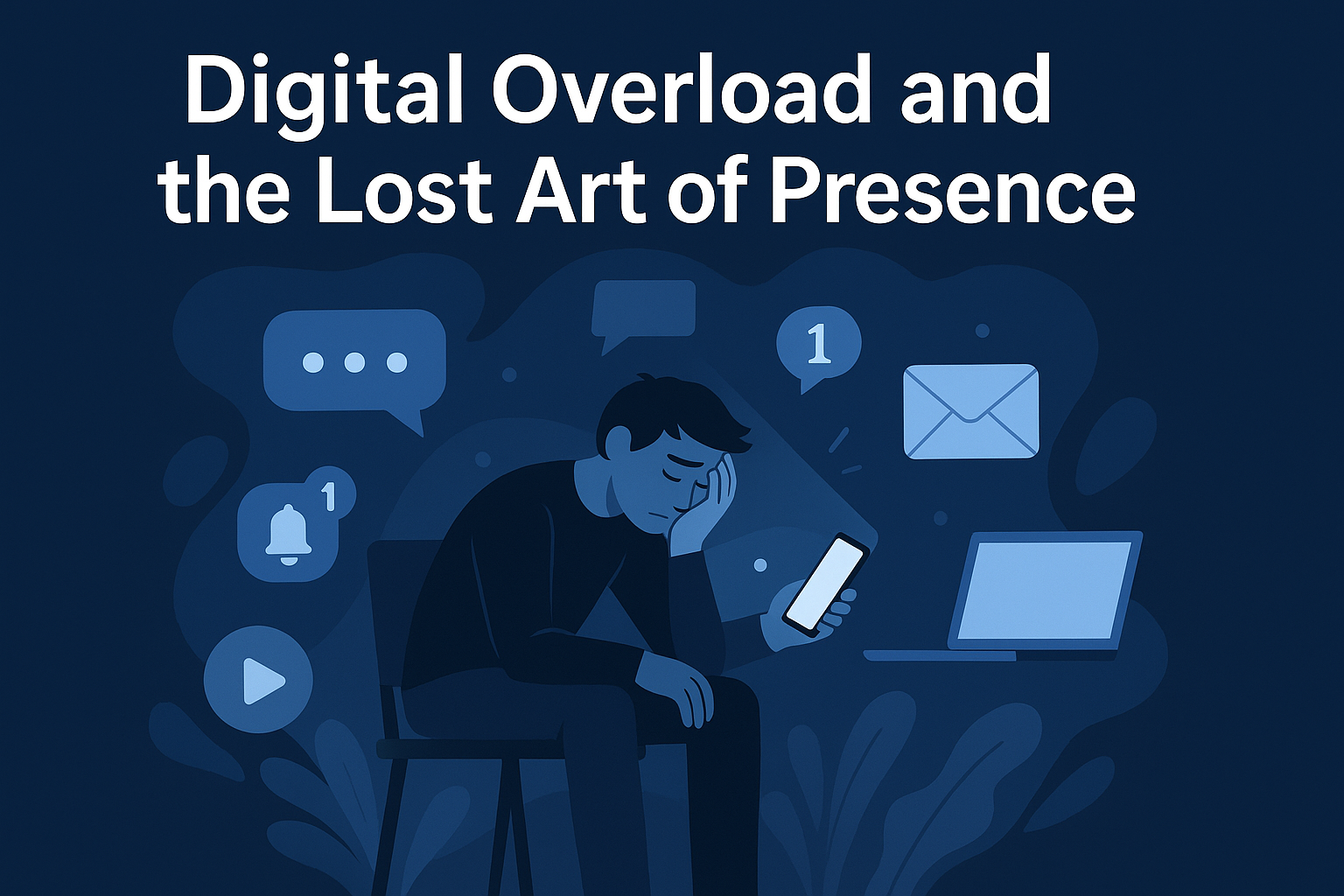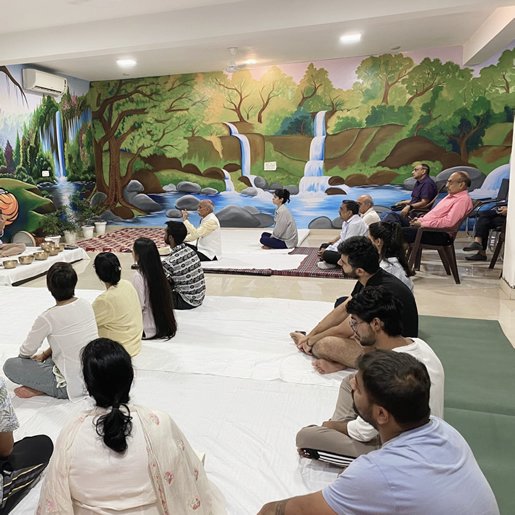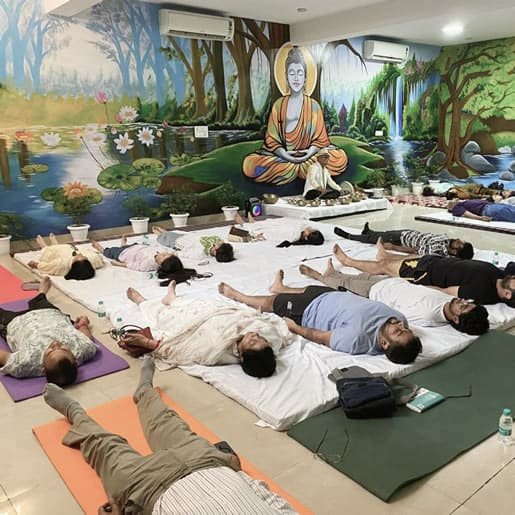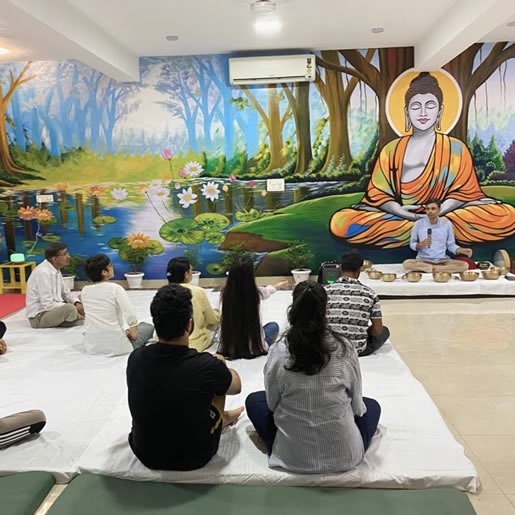Our mind keeps on moving forward and backward in thoughts while missing the present moments, which is what we need to experience. Our mind oscillates from pure awareness to complete mindlessness or absent-mindedness. We experience the highest state of awareness when we focus on the moments at hand. This state is known as mindfulness. During the day, we keep on missing, in reality, present moments. This has a cost. We often become mindless, impulsive, and reactive, when we are not mindful. We become prone to miss valuable experiences because we are, in a sense, not awake during those times. As a result, we are not able to exercise complete control over our inner world i.e. mind.
Surprisingly, there is an extremely easy exercise through which we can learn and cultivate mindfulness. That mental exercise is meditation. It’s currently one of the most powerful wellness trends in the world. It’s growing exponentially across many nations, including India. Since the benefits of meditation have been validated by scientific studies across the globe, very large numbers of people are turning to it in droves.
Meditating is a simple mental exercise, but in practice, people find it difficult to continue for a longer time. What is generally seen is people enthusiastically starting it but quitting after a few sessions or a few days, due to a variety of reasons. The most common is a lack of patience and perseverance. During initial sessions, they find it difficult to observe breathing for an extended time. Though gradually, this “observation” becomes more and more easy, students tend to lose patience. Those who succeed in the first few days sit quietly for an uninterrupted 10 to 15 minutes, then they generally start practising meditation regularly. Moreover, they, in between, start seeing its impact on their mind and body.
You can practice meditation at home, no teacher is required
One can meditate even while walking, sitting, or lying on the ground, but the recommended posture is sitting quietly, with closed eyes, in peaceful surroundings.
Sit on a cushion on the floor, or a chair, with a straight and unsupported back.
Pay close attention to the movement of the breath.
Breathing in, be aware that you are breathing in, and how it feels.
Breathing out, be aware that you are breathing out.
Feel the coolness of air going in, and the warmth of the air coming out from the nostrils.
Continue this simple process for the length of your meditation practice, constantly redirecting the attention back to the breath.
While we meditate, we are, as to be expected, distracted by surrounding sounds, physical sensations, and the irrepressible arising of thoughts.
Whenever this happens, gently recognise that you have been distracted, and bring the attention back to the breathing.
Just observe whatever is happening in a non-judgmental manner while observing and watching the breathing.
This is the essence of breathing-based mindfulness meditation.
In Transcendental Meditation, ™ instead of breathing, we pay attention to a mantra. TM is one of the most important and worldwide popular meditation techniques. Introduced way back in 1955 by Maharishi Mahesh Yogi (1918-2008), the technique is again very simple. One has only to inwardly repeat, silently, in the mind, a continuous mantra or word that is pleasing to the mind to achieve a restful state. TM gives our mind an inward direction. It helps us to turn the attention within, and once that is accomplished, the mind starts to settle down.
Another very popular meditation in India is Vipassana meditation, which is taught in various centres set up throughout India and abroad by the late S.N. Goenka, the founding teacher.
For Vipassana meditation, meditators are asked to practice, for the first few days, breathing-based meditation, as explained earlier.
After that, they need to observe their thoughts and bodily sensations in a non-judgmental way.
This meditation is considered tougher than TM and mindfulness meditation, but supposed to be quite effective.
As we have seen, in meditation we are, while sitting quietly and comfortably, present to observe our breath or bodily sensations or to repeat the mantra with closed eyes. The idea is not to do anything intentionally, just experience the present moments. We are not required to react or respond to thoughts arising in our mind, but simply to observe and let them go.
Whether we attend to the breath (mindfulness meditation), mantra (TM) or bodily sensations and thoughts (Vipassana meditation), attention is distracted and our mind automatically goes in a different direction. Better yet, it simply rests. It is very difficult to hold our attention on breathing, mantra, or the coming and going of physical sensations and thoughts, continuously for even 20 seconds. Random thoughts are certain to arise. Regardless of the nature of the distraction, we may then gently bring our attention back to the breath or mantra.
We keep on repeating this process while meditating. Focus, un-focus, and then focus again goes on without resistance. When we do this, the mental faculty gets trained, and we become more and more focused. As we become more focused, our mind’s wandering lessens, and we become happier . . . or less unhappy. This is the simple science behind meditation.
In the same way that we practice mindfulness meditation, we can practice mindfulness in our daily activities – for instance, while eating, walking, and talking. In mindfulness meditation, the idea is to pay attention to whatever is going on in the present moment and to be aware of what is happening. If we are speaking, we must pay attention to the words we speak, and attentively listen to what the other person is saying. If we are walking, we should be aware of surrounding sights and sounds, our body movements, such as feet touching the ground, and the flow of the breath.
Innumerable studies have validated that meditation can transform one’s life with far more self-awareness, focused attention and clarity. Through these attributes, we can live mindfully. With better control over our inner lives, we certainly can live life on our own terms. Clarity and control are also the conditions in which a strong sense of compassion and empathy take root, which can give meaning to our lives. Studies have established that we can become more compassionate and empathetic toward others through meditation. We understand their feelings and points of view with greater clarity and understanding. Living mindfully, with warm feelings of love and compassion, also improves our immune system.














